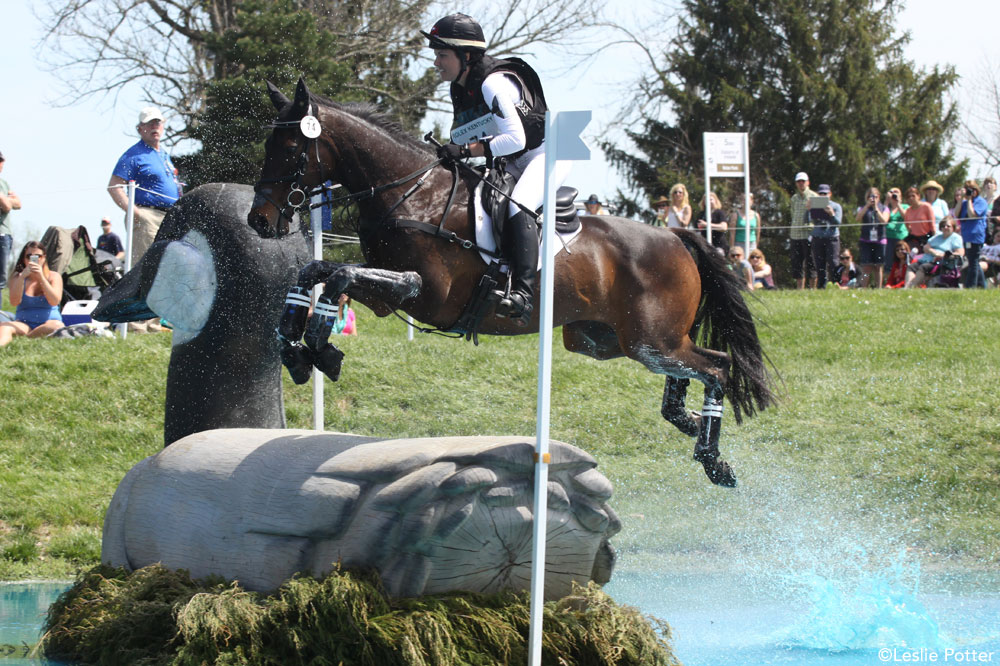
Q: I am looking for a good safety vest to wear while jumping. How do I find the best one?
Some of the older brands and models are not American Society for Testing and Materials (ASTM) certified. In the U.S., you must have on a safety vest for the cross-country phase at recognized eventing shows, although vests are not yet required to be certified. New ASTM-certified vests cost around $150 and upward.
The European Union also has a certification system that some riders feel is more stringent than the ASTM’s. British Equestrian Trade Association (BETA) 2000 testing levels (1, 2 and 3) were implemented in the year 2000. Level 3 is recommended for those riding on hard surfaces, jumping, and riding green or rambunctious horses.
Some brands of vests are now both ASTM- and BETA 2009 Level 3-certified. These cost approximately $200 and up.
Click here to watch a video on how to fit a safety vest >>
 |
| Air vests deploy like a car’s airbag when a rider becomes separated from the saddle, providing additional protection against potential injury. Photo: Leslie Potter |
Another relatively recent advance that is slightly more
costly are inflatable air vests. These are designed to be worn on top of a
regular foam vest, and have a lanyard that attaches to the saddle. In the event
that you part ways with your horse, the lanyard pulls free from the vest,
activating a canister of carbon dioxide which quickly inflates the vest in
approximately 0.1 seconds. A replacement air canister must be installed before
the vest can deploy again. The two brands of air vests most widely available in
the U.S are Point Two (www.pointtwousa.com)
and Hit Air (www.air-vest.com). There are
some differences between the two, namely that Hit Air inflates outward while
Point Two inflates inward. Both are available in a variety of colors. Point Two
also offers a foam vest/air vest hybrid so you don’t have to wear two separate
vests.
Keep in mind that air vests are
not currently certified by either the ASTM or BETA. If you’re an eventer, you
are required to wear a foam vest during the cross-country jumping phase (even
if it’s not certified), but air vests are considered optional equipment.
On to the second point: comfort. Many advances have been made since the days when the only safety vest came in green and made you look like a Teenage Mutant Ninja Turtle, complete with huge shoulder epaulets. Even with such advances as thinner and lighter materials, brand preference mostly depends on comfort. It’s best to go to a brick-and-mortar store, at least to try them on, as opposed to purchasing online sight unseen. Try adding a helmet and sitting in a test saddle in jump position. Is your movement free or obstructed? Does the vest feel uncomfortable anywhere? Does the back of the helmet hit the top of the vest? Keep in mind that some vests are heat-sensitive and designed to mold to your form after you’ve had them on for a while.
That should give you a few pointers before you go shopping. Good luck!






Thanks for the tips. I’ve been looking into body protection and it’s nice to have other info.
good info
I have a tipperary vest and its great! I beleve it costed around 150
I don’t wear a vest jumping, but I don’t jump very high.I hope that is safe!
Great tips.
Excellent answer, Thanks!
Excellent answer, thanks.
I think it should be law to wear a body protector on the roads. I rent an eventing course from http://www.willowbrookridingcentre.co.uk and they make it compulsory to wear a body protector and hat. This should be the same everywhere